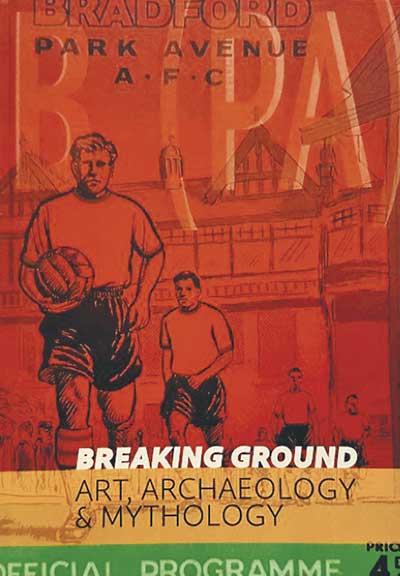
edited by Neville Gabie, Alan Ward and Jason Wood
Axis Projects, £30
Reviewed by Chris Stride
From WSC 371, January 2018
Buy the book
Archaeology and football are not obvious bedfellows. Goalposts or corner flags are unlikely to be uncovered at the Colosseum or even in the medieval substrata of London. Moreover so much of modern football has been committed to film it’s easy to think that everything worth knowing has been recorded for posterity.
Yet, classifying this lavishly illustrated quasi-academic book on the excavation of a small section of a long-derelict stadium as a niche product for groundhoppers would be doing it an extreme disservice. It helps that the ground in question, Bradford Park Avenue’s eponymous former home, was a grand venue with sweeping terraces, handsome gabled stands and a corner pavilion, not dissimilar to that found at Craven Cottage. This reflects how “the Avenue” were the more successful of Bradford’s two teams for many years. Their late-1960s decline, however, was precipitous, with a fourth successive re-election bid failing in 1970, and just four years later they folded
The club re-formed in the 1980s and now chug along in the National League North, playing at the bleak Horsfall Stadium. Meanwhile, protected from developers by a covenant, the remains of their former ground still lurk in suburban Bradford, bricked up turnstiles shielding terraces blanketed by undergrowth. Enter a team of archaeologists, funded by the National Football Museum and Arts Council England, looking to unlock this time capsule.
On one level Breaking Ground serves as a detailed resume of their excavations. There are photos of finds, which ranged from the predictable (studs, debris from demolished stands, holes for the goalposts) to the less expected (marbles, a nappy pin). However, more critical to the success of this book than the actual objects recovered is that, unlike your typical archaeological project, the site had been an active venue well within living memory. This enabled the authors to weave fans’ memories and interpretations of the findings between the more descriptive sections.
Among many such anecdotes, it appears that some coins found in the goalmouth area in front of the old Kop were not thrown at visiting goalkeepers, but spilled during a badly managed half-time collection of donations, dating from one of Avenue’s episodes of financial meltdown. The aforementioned marbles found nearby were legitimate terrace weaponry: the now late-middle-aged miscreant responsible even came forward during the dig. More poignant are the photos of Park Avenue supporters collecting once again on the cleared patches of terracing during the dig, and the twisted remains of the last-surviving crush barrier.
Largely due to the multi-author format, Breaking Ground is not always coherent in style or content, jumping from a potted club history, to an academic archaeological report complete with soil strata, to a survey of the trees growing on the long abandoned terraces. But these problems are easily transcended. This is a book with heart and soul: not so much due to the facts or artefacts uncovered by the project, but in digging up memories of matchday experiences that photos and film of past match action can’t bring back.